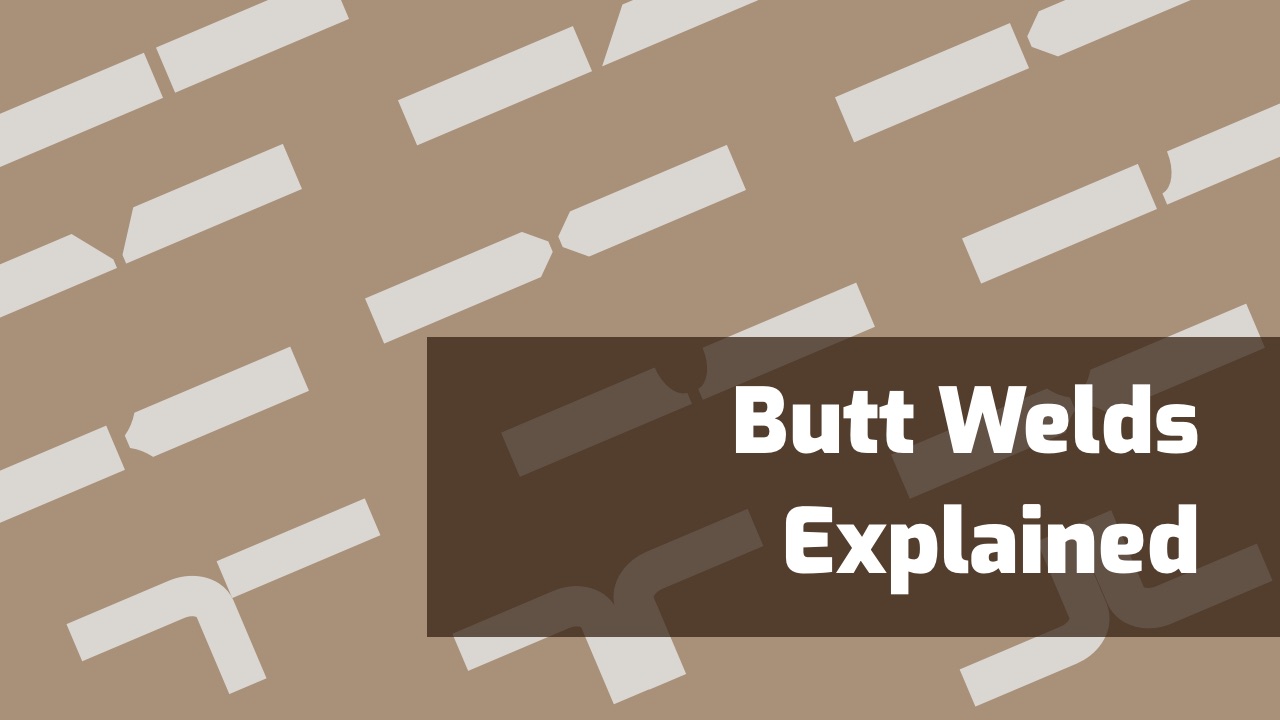One of the first things a beginner welder must learn is how to make a butt weld. It’s a fundamental joint that you’ll use regularly.
In this article, you’ll learn when the butt weld is used, its advantages and disadvantages, and the types of butt welding joints.
What is Butt a Weld?
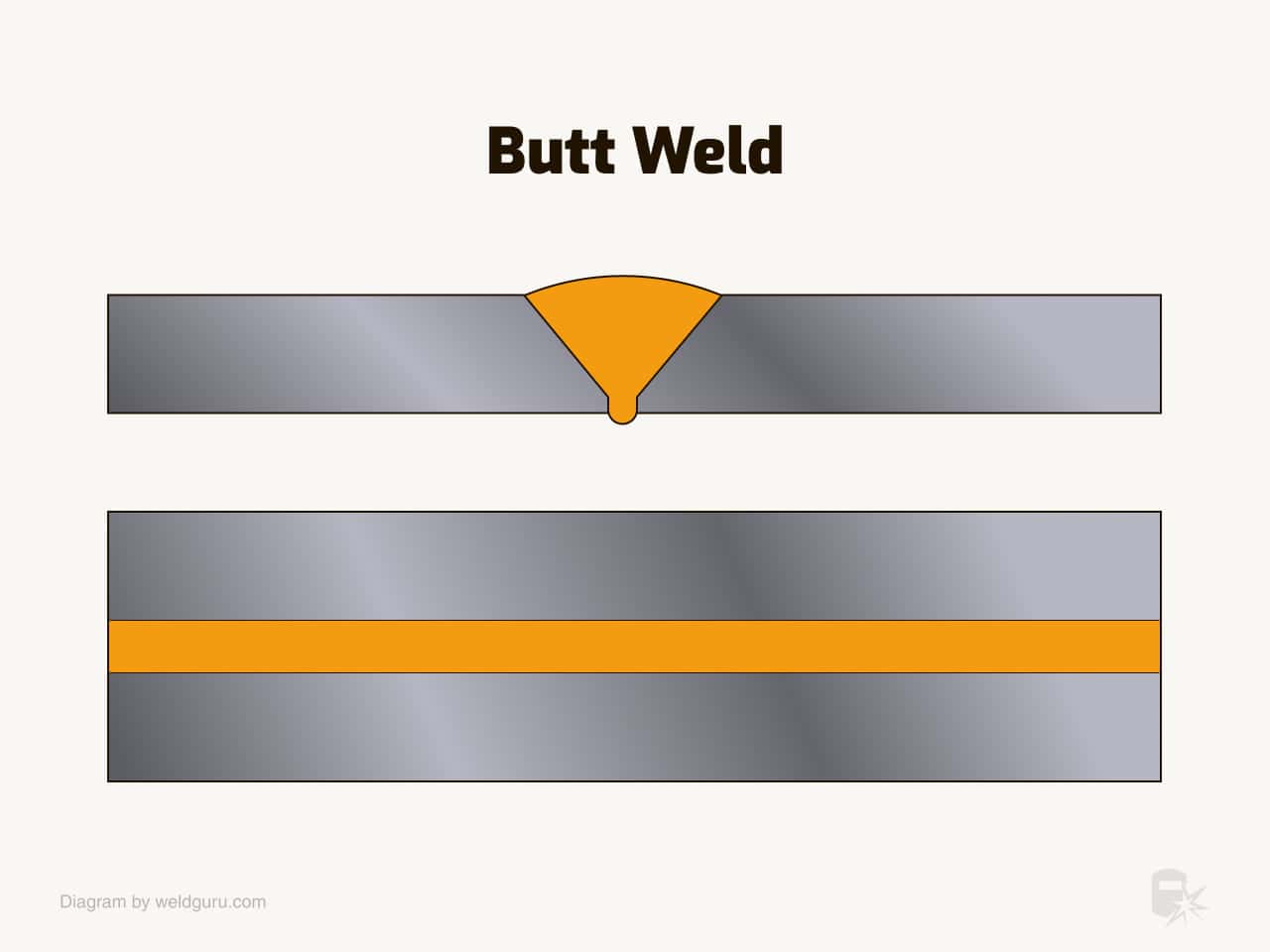
A butt weld consists of two pieces of metal placed next to each other “end-to-end” in the same plane. Applying a continuous weld down the centerline welds the pieces together.
There is no stock overlap, and the joint can have a root opening.
When Would You Use a Butt Weld?
Butt welding use varies across industries. It is used with automated welding machines or in standard manual arc welding applications.
For example, the butt joint can be used to weld two plates together or when welding pipe fittings that are butted together.
Achieving seamless pipe butt welds requires beveling the workpieces depending on the thickness and required penetration. Additionally, most pipe fittings are designed to meet butt weld joint requirements so that you can easily weld them together.
Pros
- A butt joint is easy to machine after welding
- High strength with complete fusion
- It’s easy to inspect for distortion
- Easiest welding joint to perform ( next to the fillet weld)
- Applicable to a variety of metals
- It’s somewhat less susceptible to contamination
- Excellent for continuous linear or circumferential welds
- Easiest weld joint for post-welding treatment (grinding, polishing, painting, etc.)
- Butt-welded pipe fittings are cost-effective
- Butt welding performs best with two commonly used welding processes, MIG and TIG
- Butt welding performs best with two commonly used welding processes, MIG and TIG
Cons
- Butt weld requires beveling of the joint edges if welding thick metal
- This welding joint is prone to porosity, cracking, or incomplete penetration
- It’s challenging to weld thin sheet metal without filler metal and avoid distortion
- Sensitivity to faying surface conditions (the melted metal area)
- It may need fixturing or backing bar implementation
Here’s a short video showing a simple butt weld:
Types of Butt Weld Joints
Depending on the joint design, there are five types of butt welds:
- Square
- Bevel
- V Groove
- J Groove
- U Groove
A choice of the joint design depends on the width of the gap, metal thickness, and how the welded part will be used.
You’ll usually get this information in the weld specifications and symbols from the engineer. Or you can choose the butt type based on the information presented below.
Square Butt Weld
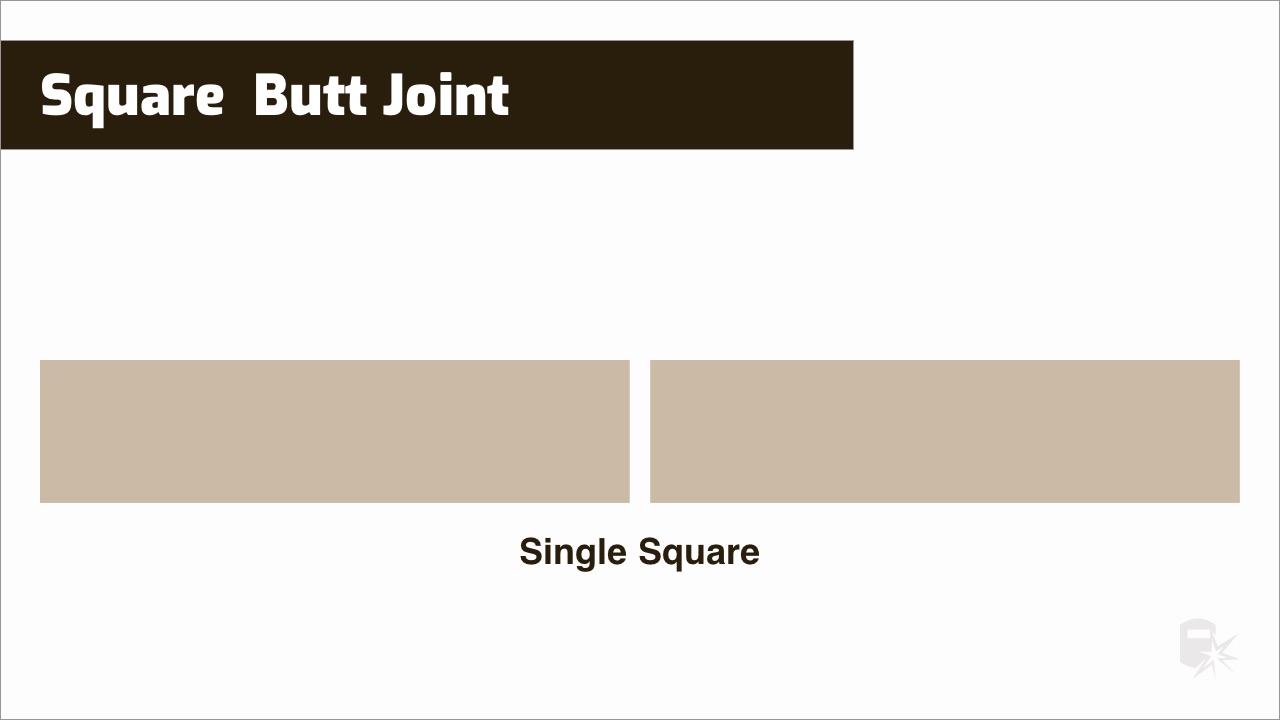
Square groove butt welds are the simplest joint design. It’s used with metal up to 3/16 in. thickness and when the weld joint won’t sustain constant load. The joint can have a root opening or have a tight fit between the workpieces. But depending on the metal and filler material, the root opening may be necessary.
The edges are not beveled, chamfered, or modified in any way. They remain squared, and the weld is deposited in the centerline between the butted stock pieces.
Welding a square groove requires alignment of the base metal in the same plane. If welding with a root opening, the gap needs to be consistent along the entire joint.
Single Bevel Butt Weld
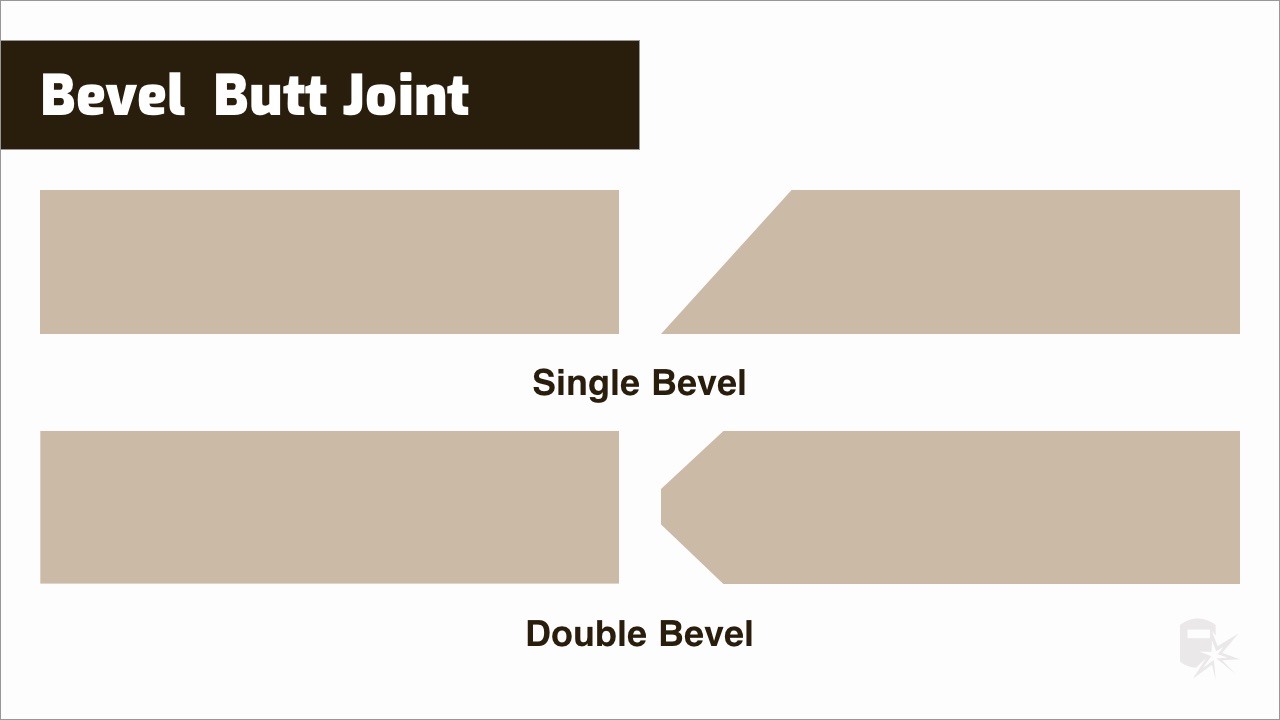
Single bevel joint welds require beveling one of the base metal plates to a specified angle or an angle of your choice. The edge of the other metal piece remains square.
The angle of the bevel depends on the thickness of the metal and the desired bead width. A root opening may be used to improve penetration of the squared metal piece.
V Groove Butt Weld
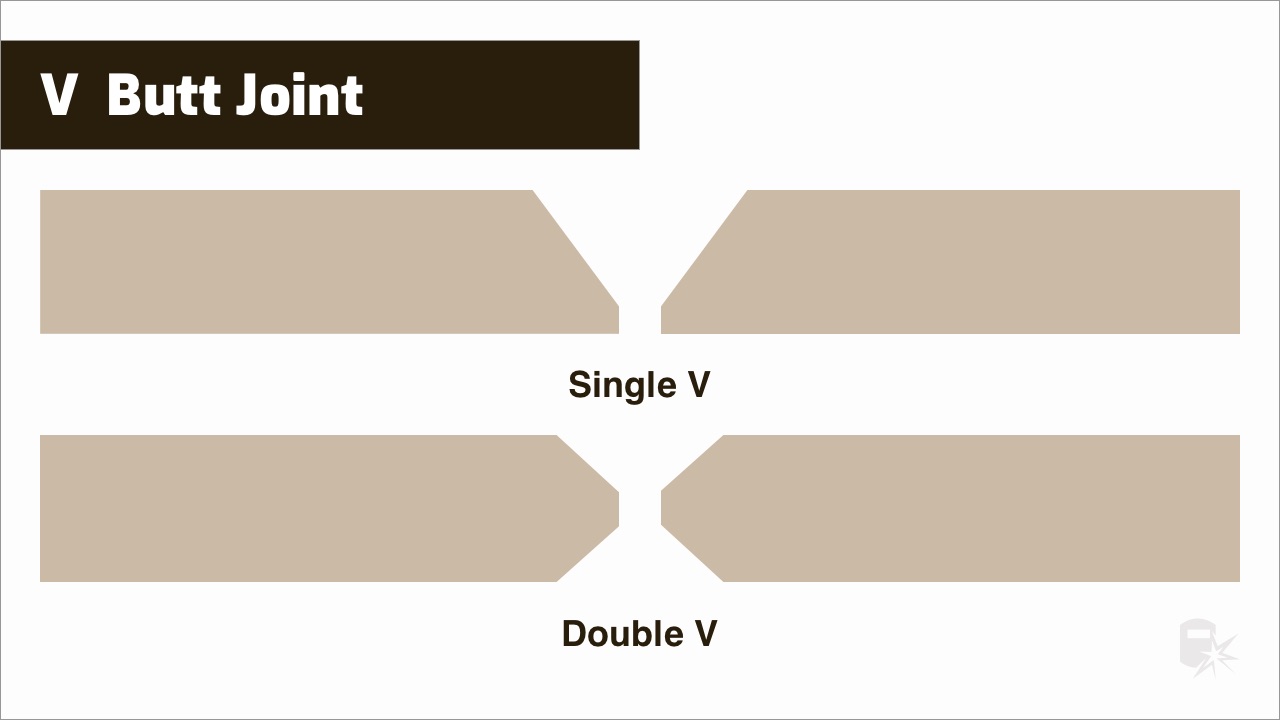
V groove butt welds are something like a double bevel joint design. It requires beveling both workpieces to make a V-shaped opening between them. It’s the most common joint design for butt welds and it is used to achieve optimal penetration. Whenever you weld something above 3/16 in. of thickness, this butt weld joint should be your go-to choice.
It’s relatively easy to make the bevels. You can use specialized tools like the mechanical beveler or simply take an angle grinder and grind out the metal’s edges. But when working with thickness over 3/8 in., it’s faster to use a plasma torch or an oxy-acetylene set up to bevel the edges.
The V groove joint design requires significantly more filler metal. If working with exotic metals, the TIG alloy filler material will increase the price of the project. The additional preparation and filler metal costs, combined with the increased time it takes to complete these welds, make the V groove less economical than the single bevel and the square butt weld designs.
These joints are commonly used in manufacturing and other standard welding jobs. Typical applications include welding structural steel and pipe.
U Groove Butt Weld
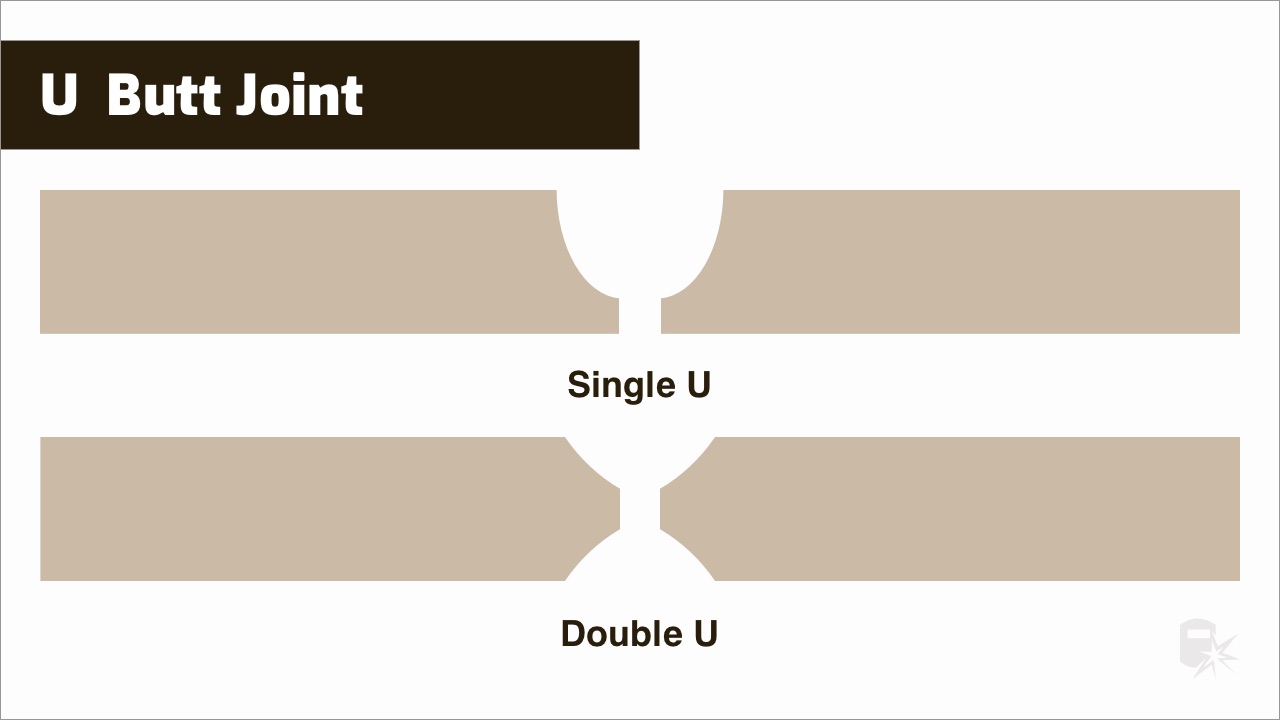
The U groove is similar to the V groove design, except that the opening between the pieces is U-shaped. The edges require a concave treatment which is difficult to do unless you have the proper equipment. It’s used in specialized settings because it can reduce the costs in comparison to the V groove.
The amount of filler material required to fill the groove is reduced when the metal pieces are prepared for U groove butt welding. But this design requires an experienced operator. The oblique shape of the joint requires additional skill when controlling the weld puddle, arc, and filler material.
Thanks to the lesser amount of deposited filler metal, the U groove may also experience less residual stress. Also, the weld will be stronger, less prone to distortion, and cracking. Additionally, any required heat treatment for stress relief will be more economical.
J Groove Butt Weld
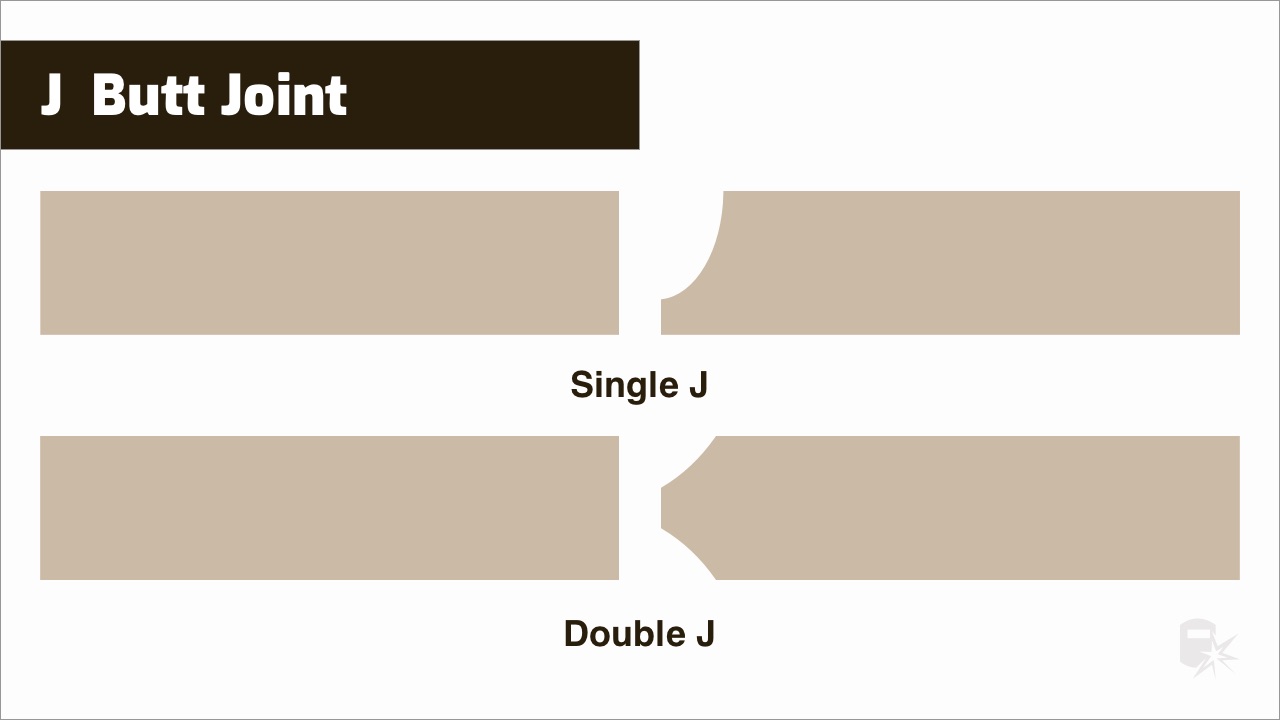
Just as a single bevel’s joint design is “half” of the V groove, the J groove is half of a U groove. It’s used in similar settings as the U groove butt weld, but it’s even more difficult to create and weld. It requires a lot of skill, and it’s only economical if the savings in filler metal exceed the additional machining and operator costs.
The J groove butt weld is easiest to weld horizontally with the perpendicular edge is on the lower surface. But even then, the electrode must be angled obliquely into the groove toward the vertical face, which requires a skillful welder. We have a separate article covering horizontal and other welding positions that’ll teach you more about this.
Butt Weld vs Fillet Weld vs Lap Weld
To the inexperienced welder, these three welds may appear similar. However, they have significant differences.
As previously noted, butt welds join two workpieces in the same plane.
The fillet weld has a triangular cross-section bead and joins two metal pieces at a 90-degree angle in a T-joint, lap joint, or a corner joint.
The lap weld joins two overlapping pieces of metal with fillet welds. The bottom piece receives the bottom leg of the weld and the upper piece receives the vertical leg of the weld at a 90-degree angle.
The lap weld joint can also receive edge preparation like the butt weld joint, while fillet joints don’t typically need beveling of the edges. You can learn more in our article about the weld joint types.
Wrapping Up
Every welder needs to know how to properly weld a butt joint. Thankfully, it is the easiest weld joint type to master and it rarely requires special treatment like the U and J grooves, except in a professional environment.
I hope you’ve learned something useful. If you are a beginner, don’t be discouraged if your butt welds fail or workpieces get distorted, especially if welding sheet metal. This is a fairly easy joint to master, so keep practicing and you’ll get the hang of it.
